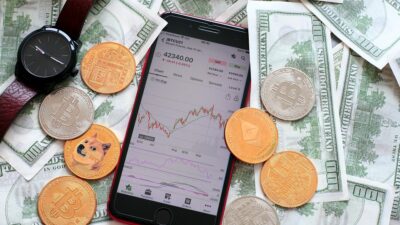The cryptocurrency landscape has undergone significant transformation in 2023, particularly in the realm of altcoins. Initially seen as mere speculative assets to supplement the dominance of Bitcoin, altcoins have progressed from hype-fueled projects to more mature, functional cryptocurrencies. This evolution has been driven by technological advancements, regulatory clarity, and an increasingly discerning investor base.
The State of the Altcoin Market
In early 2023, the altcoin market has seen a remarkable resurgence. The total market capitalization of altcoins has surpassed previous highs, aided by a renewed interest from both retail and institutional investors. With Bitcoin stabilizing its position as a digital gold alternative, altcoins are now carving their niches in areas such as decentralized finance (DeFi), non-fungible tokens (NFTs), and more robust blockchain ecosystems.
Key Trends in 2023
-
Decentralized Finance (DeFi) Maturity:
DeFi has seen exponential growth, with altcoins serving as the backbone of this emerging financial system. Platforms offering lending, staking, and yield farming have gained traction, enabling investors to earn passive income on their holdings. Notable altcoins, such as Ethereum (ETH), Binance Coin (BNB), and Solana (SOL), have solidified their positions as facilitators of decentralized financial services. -
Regulatory Clarity:
One of the most significant factors influencing the altcoin market in 2023 has been the increasing regulatory clarity provided by governments worldwide. Recent initiatives to classify cryptocurrencies and provide guidelines for their use have fostered a more stable investment environment. This has encouraged institutional players to enter the market, boosting the credibility of various altcoins. -
Sustainability and Eco-Friendly Initiatives:
In a world increasingly focused on climate change, sustainability has become a key theme in 2023. Altcoins that utilize energy-efficient consensus mechanisms, like proof-of-stake, have gained popularity. Projects such as Cardano (ADA) and Algorand (ALGO) are leading the way, showcasing a commitment to reducing the carbon footprint of blockchain technology. -
Interoperability and Cross-Chain Solutions:
As the blockchain ecosystem evolves, so does the need for interoperability. Altcoins focused on enabling seamless transactions across different blockchains are gaining traction. Projects like Polkadot (DOT) and Cosmos (ATOM) exemplify this trend, allowing users to leverage various blockchain networks without the barriers of traditional centralized systems. - NFTs and Tokenization:
While the initial NFT boom focused on digital art, 2023 has expanded this concept into various industries, including gaming, real estate, and music. Altcoins built around NFT ecosystems, such as Flow (FLOW) and Immutable X (IMX), have evolved to provide robust frameworks for artists and developers to create, buy, and sell tokenized assets.
Case Studies of Successful Altcoins in 2023
-
Ethereum (ETH):
Transitioning to a proof-of-stake consensus in late 2022, Ethereum has solidified its dominance in the DeFi and NFT spaces. The implementation of its scalability solutions, like Layer 2 rollups, has enhanced transaction speed and reduced costs, making it more appealing for developers and users alike. -
Chainlink (LINK):
As a leading decentralized oracle network, Chainlink has seen heightened adoption in 2023. Its ability to connect smart contracts with real-world data has positioned it as a critical player in the DeFi sector, enabling various applications to function more seamlessly. - Avalanche (AVAX):
Gaining attention for its rapid transaction speeds and scalability, Avalanche has emerged as a strong contender in the smart contract platform race. Its unique consensus mechanism allows for high throughput and low fees, attracting developers and investors looking for alternatives to Ethereum.
Challenges Facing Altcoins
Despite these advancements, altcoins are not without their challenges. Market volatility remains a significant concern, and the potential for regulatory crackdowns can create an uncertain environment. Additionally, the influx of new projects makes it difficult for investors to discern which altcoins offer genuine value versus those driven purely by hype.
Conclusion
In 2023, the altcoin market appears to be transitioning from speculative hype to functional reality. With a focus on innovation, sustainability, and regulatory clarity, altcoins are proving to be more than just Bitcoin alternatives; they are becoming integral components of the evolving digital economy. Investors and enthusiasts alike are watching closely as these dynamic cryptocurrencies continue to mature, paving the way for a future where they coexist alongside traditional financial systems. As the landscape evolves, the discerning investor will be key to distinguishing between fleeting trends and enduring value in the world of altcoins.



